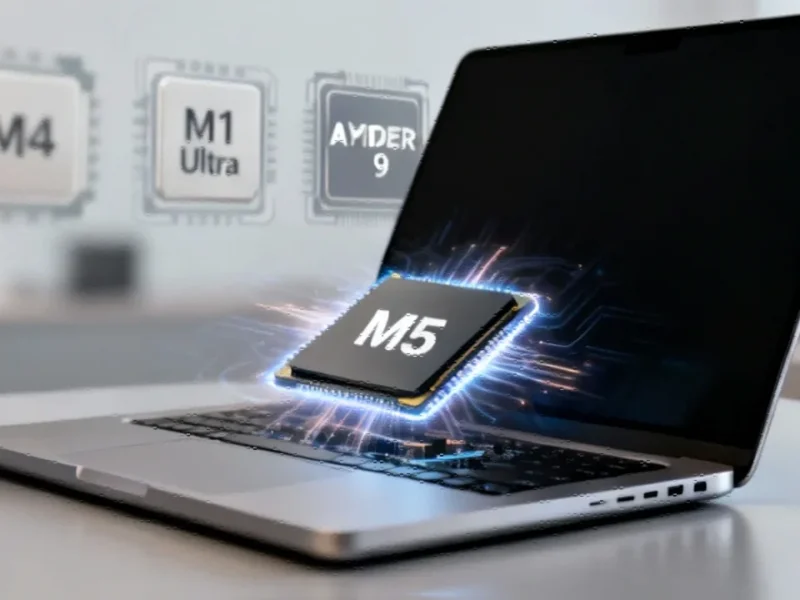Samsung’s Strategic XR Entry with Android-Powered Headset
Samsung has officially entered the extended reality (XR) hardware market with the launch of Galaxy XR, marking a significant milestone in the company’s mobile ecosystem expansion. Built on Google’s Android XR platform, this headset represents the fruition of the collaboration between Samsung, Google, and Qualcomm that was first announced nearly a year ago. The device positions itself as a direct competitor to Apple’s Vision Pro while offering a more accessible price point and deep integration with Google’s AI ecosystem.
Table of Contents
Technical Specifications and Hardware Capabilities
The Galaxy XR boasts impressive technical specifications that place it firmly in the premium XR category. Powered by Qualcomm’s Snapdragon XR2+ Gen 2 chipset, the device features a 4K Micro-OLED display that promises crisp, immersive visuals. With 16GB of RAM and 256GB of storage, the headset is equipped to handle demanding XR applications and content. The battery life of up to 2.5 hours aligns with current industry standards for high-performance XR devices, and the ability to use the headset while charging addresses a common limitation in wireless VR/AR experiences.
Samsung has emphasized comfort in the design, describing the Galaxy XR as lightweight and featuring a detachable light shield that enhances immersion by blocking external light. This attention to ergonomics suggests Samsung has learned from early adopters’ feedback about comfort issues with previous generation XR headsets., according to industry experts
Android XR: The Software Foundation
At the core of the Galaxy XR experience is Android XR, Google’s operating system specifically designed for extended reality devices. This platform represents Google’s strategic response to Apple’s visionOS and Meta’s Horizon OS. The integration with Google Gemini provides sophisticated AI capabilities that differentiate the Galaxy XR from competitors., according to technology trends
“Android XR is the first Android platform built entirely for the Gemini era,” said Sameer Samat, President of Android Ecosystem at Google. “Through our partnership with Samsung, Android XR will unlock entirely new ways to explore, connect, and create, building an open, unified platform for the next evolution of computing.”, according to further reading
AI Integration and User Experience
Samsung has positioned AI as central to the Galaxy XR experience, with deep integration of Google’s Gemini AI assistant. Users can interact with Gemini to obtain contextual information about what they’re viewing, whether watching YouTube videos or navigating with Google Maps. The inclusion of Circle to Search functionality is particularly innovative, allowing users to circle real-world objects within the XR environment to retrieve information about them., according to industry analysis
This AI-centric approach reflects the broader industry trend toward intelligent XR interfaces that understand and respond to user context and intent. The preloaded Android apps optimized for Android XR, including YouTube and Google Maps, provide immediate utility while demonstrating the platform’s capabilities.
Market Position and Competitive Landscape
Priced at $1,800, the Galaxy XR positions itself as a more accessible alternative to Apple’s $3,500 Vision Pro while offering comparable core functionality. This pricing strategy could help Samsung capture market share from professionals and enterprises looking for capable XR solutions without the premium Apple tax.
Won-Joon Choi, COO of Samsung’s Mobile eXperience business, emphasized the strategic importance of this launch: “With Galaxy XR, Samsung is introducing a brand-new ecosystem of mobile devices. Built on Android XR, Galaxy XR expands the vision for mobile AI into a new frontier of immersive and meaningful possibilities.”
Future Implications and Industry Impact
The Galaxy XR launch represents more than just another product introduction—it signals Samsung’s serious commitment to the XR space. The company has already teased upcoming “AI glasses” running Android XR, developed in partnership with Google and Qualcomm. This suggests a broader hardware strategy that could eventually include multiple form factors across the XR spectrum., as earlier coverage
For the industrial computing sector, the Galaxy XR offers potential applications in training, remote assistance, design visualization, and data interaction. The Android XR platform’s openness compared to Apple’s closed ecosystem could make it particularly attractive for enterprise customization and specialized industrial applications.
Currently available in the US and Korea through Samsung’s website, the Galaxy XR’s market reception will be closely watched as an indicator of consumer and enterprise appetite for Android-based XR solutions. Its success or failure could significantly influence the trajectory of the broader XR market and determine whether Android XR becomes a viable competitor to Apple’s visionOS in the emerging spatial computing landscape.
Related Articles You May Find Interesting
- OpenAI Launches Atlas Browser with AI Agent Feature to Compete in Search Market
- Authors Demand Copyright Reform Against AI “Theft” of Literary Works
- Enterprise AI Arms Race Intensifies as Tech Giants Deploy Strategic Platforms an
- Dell Pro Max 16 Plus Workstation Delivers Professional Power with RTX Pro 5000 B
- OpenAI Debuts ChatGPT Atlas Browser, Transforming Web Navigation Into AI Workspa
References & Further Reading
This article draws from multiple authoritative sources. For more information, please consult:
This article aggregates information from publicly available sources. All trademarks and copyrights belong to their respective owners.
Note: Featured image is for illustrative purposes only and does not represent any specific product, service, or entity mentioned in this article.



